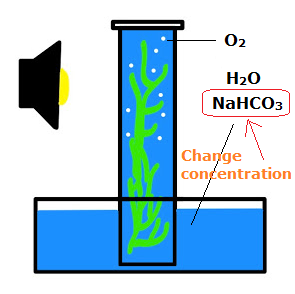


In plants, the light reactions take place in the thylakoid membranes of organelles called chloroplasts. Glucose, the primary energy source in cells, is made from two three-carbon GA3Ps.Īlthough the equation looks simple, the many steps that take place during photosynthesis are actually quite complex. The light-dependent reactions use light energy to make two molecules needed for the next stage of photosynthesis: the energy storage molecule ATP and the reduced electron carrier NADPH. In reality, the process takes place in many steps involving intermediate reactants and products. The following is the chemical equation for photosynthesis ( Figure): The basic equation for photosynthesis is deceptively simple. The reaction requires energy in the form of light to overcome the activation energy needed for the reaction to proceed. Oxygen is generated as a waste product of photosynthesis. Explanation In words, the equation may be stated as: Six carbon dioxide molecules and six water molecules react to produce one glucose molecule and six oxygen molecules. Photosynthesis uses solar energy, carbon dioxide, and water to produce energy-storing carbohydrates. These sugar molecules contain energy and the energized carbon that all living things need to survive. This process can be seen in green plants and photosynthetic bacteria. In this process, oxygen is produced as a by-product. Green plants and several other organisms use light energy and convert carbon dioxide and water into glucose. HO is the chemical formula for water, CO is the chemical formula for carbon dioxide, CHO is the chemical formula for glucose, and O is the chemical formula for an oxygen molecule. After the process is complete, it releases oxygen and produces glyceraldehyde-3-phosphate (GA3P), as well as simple carbohydrate molecules (high in energy) that can then be converted into glucose, sucrose, or any of dozens of other sugar molecules. Artificial photosynthesis is a chemical process that biomimics the natural process of photosynthesis to convert sunlight, water, and carbon dioxide into carbohydrates and oxygen. Photosynthesis is the process of capturing light energy and transforming it into chemical energy. Word equation: calcium hydroxide + carbon dioxide calcium. More.Photosynthesis is a multi-step process that requires specific wavelengths of visible sunlight, carbon dioxide (which is low in energy), and water as substrates ( Figure). Deforestation: removal of trees so less photosynthesis and more carbon dioxide in the atmosphere. In recent years the carbon cycle has been studied intensively in order to. It is an example of a biogeochemical cycle. More is therefore a key process in the carbon cycle Describes how carbon moves around the environment. Photosynthesis A chemical process that takes place in living cells, by which some living organisms (such as green plants and algae) convert energy in sunlight into chemical energy. More most plants absorb carbon dioxide from their surroundings and the carbon is transferred to more complex molecules, such as sugars and starch. The y axis is labeled carbon dioxide concentration in parts per million. Photosynthesis is a multi-step process that requires sunlight, carbon dioxide, and water as substrates.

The x axis is labeled years before present and is labeled from left to right at 400,000, 300,000, 200,000, 100,000 and 0. Carbon Dioxide CO2 CID 280 - structure, chemical names, physical and chemical properties, classification, patents, literature, biological activities, safety. During photosynthesis most plants absorb carbon dioxide from their surroundings and the carbon is transferred to more complex molecules, such. During photosynthesis A chemical process that takes place in living cells, by which some living organisms (such as green plants and algae) convert energy in sunlight into chemical energy. A line graph illustrating carbon dioxide levels in the past and present day. One of the bi-products of respiration is the gas carbon dioxide, which. The compounds produced are then used to provide the energy for cells in the process of respiration A chemical process that takes place in living cells, by which living organisms use organic compounds to create energy. A chemical process that takes place in living cells, by which some living organisms (such as green plants and algae) convert energy in sunlight into chemical energy.


 0 kommentar(er)
0 kommentar(er)
